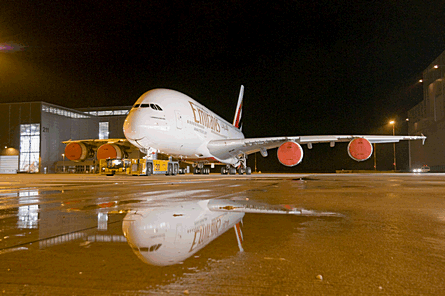As Airbus re-evaluates its production ramp-up plan for the A380, Emirates has warned that any further delays to the programme would cause an "acute problem" for its near-term expansion plans.
Meanwhile, the Dubai carrier says it will not decide about additional A380 orders until the size, shape and timing of Dubai's new international airport at Jebel Ali are finalised.
Emirates has 58 A380s on order, with deliveries due to begin this summer and run through to 2013/14. The first five A380s - originally due for delivery from late 2006 but delayed by the programme's original production problems two years ago - are all due to be delivered by March next year.
Airbus's existing A380 production plan calls for 13 deliveries this year, 25 in 2009, with output then stabilising from 2010 at the maximum planned rate of 45 a year. However, Airbus chief executive Tom Enders was reported to have said he is "conducting a major review" of this plan.
Any deviation from the existing ramp-up plan would affect deliveries to Emirates, which is of concern to the airline's president, Tim Clark, who says: "We're waiting for Airbus to complete its evaluation. The A380 deliveries are crucial to what we want to do, so if we don't get them as planned, then we'll have an acute problem."
For the longer term, Clark says the timing and capabilities of Jebel Ali's Al Maktoum International Airport will drive any decision about further A380 orders. "If the airport is built to the size, and to the pace that we want, who knows what is possible,"
Clark adds that, eventually, Emirates will have to relocate from the existing airport to the new development because he does not "see a place for two international airports in Dubai". The airport is due to be fully operational in 2015.
 |
|---|
© Airbus |
"The consultancy phase for the Jebel Ali master plan is at an advanced stage and Emirates has had a very big input into this," he says. "It should be finished by the end of the year."
Emirates had another strong year, reporting a 62.1% rise in net profits to $1.37 billion, on revenues of $10.8 billion. The seat load factor rose from 76.2% to 79.2%, but rising fuel costs have prompted Clark to push for further improvements this year, with a rise to 85% being targeted, which would equate to a 7-10% increase in revenue, he says.
Source: Flight International
















